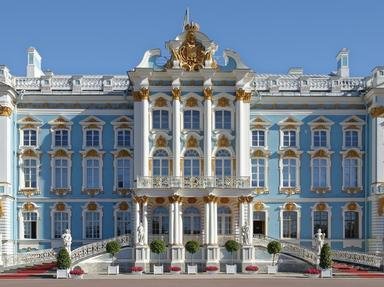Quiz Answer Key and Fun Facts
1. Although he was never officially crowned Czar, Ivan III was the first ruler of Muscovy to use the title. His marriage with Zoe Palaiologina made it possible to style his realm as 'The Third Rome' and use the title Czar in diplomatic correspondence. Where was Zoe from?
2. Czar Ivan IV was such a despotic ruler he was given the unenviable nickname 'The Terrible'. However, in the beginning of his reign he wasn't that cruel yet as his first wife could temper his fits of rage. What was the name of this first wife? She shares her name with the youngest daughter of later Czar Nicholas II who was claimed to have survived the murder of the royal family.
3. The 'Time of Troubles' came to an end with the coronation of Czar Michael. Michael's claim to the Russian throne was rather flimsy. He was the
grandson of a brother of the first wife of Ivan the Terrible. Of which dynasty that would rule Russia for the next three centuries was Michael the founder?
4. Six years after the death of Czar Alexis the succession to the Russian throne was once again in doubt as the families of Alexis' wives vied for power. The Miloslavsky family wanted Ivan on the throne although he was physically and mentally disabled. The choice of the Naryshkin family was Peter, although he was a minor. Who was eventually crowned Czar in 1682?
5. After an unhappy first marriage Peter the Great found a perfect match in his second wife Catherine, who was equally energetic and supported his ambitions for reform. When Peter died she even became his successor and the first woman to rule Russia as Empress. However, there was something her successors wanted to hide from public knowledge. What was it about Catherine her successors wanted to keep a secret?
6. The lover of Empress Elizabeth Petrovna was nicknamed 'The Czar of the Night'. Who was this influential man?
7. Few men have been so unlucky in marriage as this Czar, who was murdered by the lover of his wife. She then became his successor. Who was this hapless Czar?
8. Catherine the Great was notorious for her voracious sexual appetite. Which of the men listed below was NOT one of her lovers?
9. A remarkable fact of WWI is that the leading royals of Russia, the UK and Germany were cousins. Nicholas II and George V were related through the maternal line. The strong anti-German sentiments of their mothers may have been one of the reasons of the difficult relationship between George and Nicholas and their German cousin Wilhelm. Their mothers' antipathy towards all things German was caused by the defeat of their country of origin by Prussia in 1864. Of which nation were Maria Feodorovna, wife of Czar Alexander III, and Alexandra, wife of King Edward VII princesses?
10. She was a granddaughter of Queen Victoria, the wife of Czar Nicholas II and the mother of the unfortunate Czarevich Alexei who suffered from hemophilia. But she is best known for her alleged affair with the mysterious monk Rasputin. What was the Russian name this last Czarina?
Source: Author
AlonsoKing
This quiz was reviewed by FunTrivia editor
bloomsby before going online.
Any errors found in FunTrivia content are routinely corrected through our feedback system.

